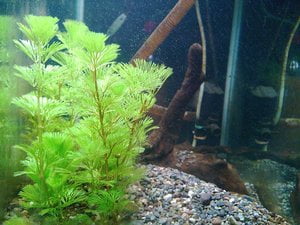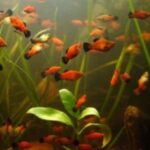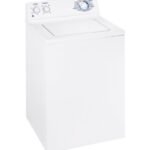Nature-themed aquariums are one of the most beautiful in the world. They are often densely planted and resemble breathtaking landscapes. Who doesn’t want to have one? Designing a nature aquarium sounds hard to do, but with a few pointers in mind, aquascaping will prove to be a fun and wonderful experience. Here a ten tips to guide you on creating a lush haven right inside your house!
Do note though that you should already have knowledge of how to properly manage an aquarium, particularly with the nitrogen cycle, weekly maintenance and lighting requirements. These are necessary for you to be able to keep a long-lived aquarium.
1. Draw a Plan
Before we all get excited to set up an aquarium, it’s always wise to create a plan first. Draw or write down the fish and plants you wish to keep, the filtration system and lighting of your tank, expenses, placement of plants, rocks, gravel and driftwood, etc. You can base these factors with the following tips below. Have in mind though that in designing your aquarium, you’re not trying to imitate nature seen underwater, but the ones on land (like mountains, hills and forests).
2. Have a Focal Point
A focal point is the main subject and point-of-interest of the aquarium, and is an important concept in art. Having one is necessary to provide the viewer’s eyes an object of focus/rest on. A focal point can be anything stationary that will stand out in the tank – a piece of driftwood, a rock, a bunch of plants, etc. To find the best place for your focal point in the tank, we’ll have to do some math. First, measure the length of your aquarium, then divide it by 1.618. Measure the resulting number on your tank, mark that section, and there you have a place for your focal point. Studies show that people find it most comfortable to look at focal points at this spot. Though it’s possible to use two or more focal points, it’s best to have only one to prevent confusion. You know what they say – less is more.
3. Choose a layout
Layouts are the basis of the placement of your plants, rocks and other decorations in the aquarium, and there are several to choose from. One of the most commonly used is the triangular or sloped setup, where plants/décor are tall on one side of the tank and are getting smaller towards the other side. Another type of layout is the concave setup, where plants and décor are high on both sides and getting lower towards the middle(resembling a V-shape). Other layouts include the convex/island setup(low on both sides and getting higher towards the middle) and the Iwagumi style(composed of three well-textured rocks and a grassy landscape, may be difficult to create for beginners). There is one layout you should avoid though – the rectangular setup, where plants and décor are tall everywhere and it almost fills up the entire tank. This isn’t good because it doesn’t provide an open space not only for the benefit of the fish, but for the viewer’s eyes as well(will be discussed later). There is no “best” layout – you can select what you like most and it’s your creativity that really adds the spark.
4. Use black, brown or gray gravel
White gravel is commonly sold in pet stores, but there are much better colors for a nature aquarium – black, brown or gray. They give a deeper and more natural “river” feel to the tank, and can really enhance the colors of your fish and plants. You can choose any one of these colors, or you can even combine them in your aquarium. Sand of the same color can also be used. Medium-small sized gravel is recommended as it is better suited to anchor plants. Also make the gravel sloped to make the tank look deeper.
5. Provide an open space
Though having lots of plants is great for visual appeal, it’s also necessary to provide an open space somewhere in your tank. It provides the viewer’s eyes a place to rest after he’s seen all the décor and gives him a relaxing feel. It also serves as a stage for the fishes to show their beautiful poses. The open space can be bare but you can cover it with low-growing/carpet plants.
6. Use only one type of rock
A common beginner’s mistake is having more than one type of rock in the tank. Having assorted types of rocks creates confusion in the aquarium and really shatters the nature theme. Only have one type of rock in the tank – if you use a lava rock, use only lava rock. Rocks with dark colors and good texture are excellent for the natural aquarium. Also remember to have more than one piece of rock in an aquarium as it will be unnatural if you only have a single rock.
7. Plant real dense
Plants speak for themselves in the aquarium – their beauty is unmatched even by fake plants. They also have many benefits to the tank so it’s a good thing to plant as dense as possible. Cover at least 80% of the tank floor with plants. When planting stem plants, plant together in bundles of two to three stems so that later on they will grow very dense, but still be sure that every plant is getting enough space. Fill some empty spaces with carpet plants like Dwarf Hairgrass or Java moss. Remember always to place tall/large plants at the background, medium-sized plants at the middle and small plants at the foreground to create an illusion of depth. You can also attach some moss to rocks or driftwood for an aged effect. While you can still use fake plants to design your nature aquarium, there’s no really beating the beauty of live plants.
8. Hide tank equipment
Aquarium equipment, especially filters and tubes, can ruin the nature effect of your aquarium. To help hide these, attach a wallpaper at the back(colors black, blue or white are the best for this) to prevent the viewers’ eyes from being distracted by hoses and all. You can also use plants and décor to hide equipment. It’s difficult to completely hide all of these but as long as they’re not immediately noticeable or catching attention your tank should do fine.
9. Select only a few species of flora and fauna
The phrase “less is more” also applies when choosing plants, fishes and/or invertebrates for your tank. It’s not always good to have a large variety of species in your aquarium, as their assorted colors and shapes will create chaos instead of harmony in your tank and may look unpleasant to the eyes. If your local pet store don’t have the species you need, don’t be afraid to order some. It’s best to only have a few species of flora and fauna, say, two or three, to allow a more simplistic and harmonious design.
10. Take good care of the tank glass
Cleaning the tank glass is important to maximize your aquarium’s design. It may not seem all that big but when droplets of water are left on the exterior of the glass, they will form hard water stains, which are unpleasing to look at and are a nightmare to clean. Great care should be practiced when handling the glass as it might cause permanent scratches. Algae on walls should also be given solutions. Wet newspaper is the best for cleaning the exterior of the glass(never use glass scrapers of any kind). Algae pads or scrubbers are great for cleaning the inside of the aquarium and are available in local pet stores. Always take good care of the tanks’ glass as it has a large impact on your aquariums’ overall look.
That’s the last of the tips I can share with you about natural aquascaping. It isn’t a must that you follow all of these, as some of the most beautiful tanks are made by breaking them, but remember- patience is a key. I hope you have fun with your aquascaping adventure and always remember that your imagination is the only limit!
Source: www.freshwateraquariumplants.com







